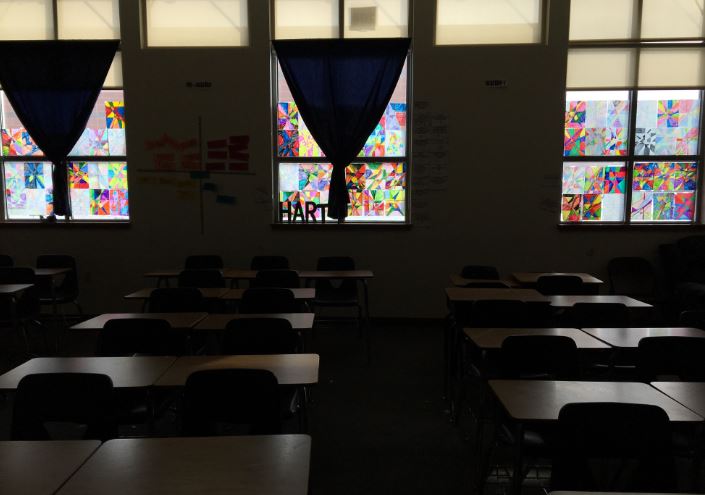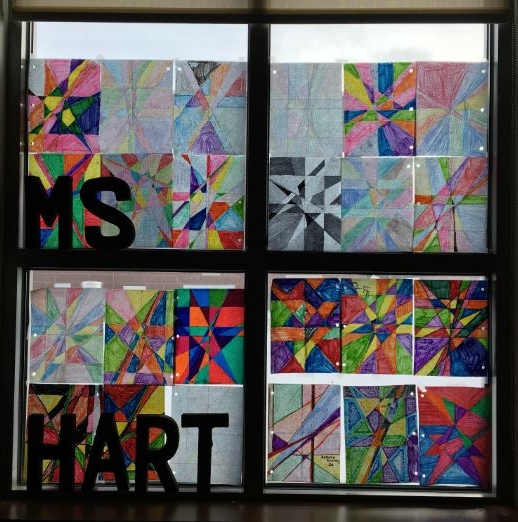“Prime numbers are what is left when you have taken all the patterns away. I think prime numbers are like life. They are very logical but you could never work out the rules, even if you spent all your time thinking about them.”
― Mark Haddon, The Curious Incident of the Dog in the Night-Time
This week has been a strange one. It's my last solid week as a 30 year old, it's colder in Denver than it has been in 2 years, it's the week before finals, and it snowed! It's been the sort of week that somehow feels long and short at the same time. A week where I have been happy and sad and everywhere in between for reasons I mostly can't even remember now. So, just like this scattered week, here is a scattered list of five things that have gotten my attention:
Emotional Relationships to Numbers (aka thank goodness I'm a prime number again)
In three short days I will be turning 31! Like many others, I am excited to leave this year behind. - not just 2016 but 30. It wasn't all bad - in fact, it was mostly really great - but the number 31 itself is exciting for me.
Why is 31 so interesting? Well, I am a math teacher, so I'm sure it's not surprising that I love reading about numbers. But my fascination is not just with numbers in a mathematical sense, but the emotions and relationships we have with numbers. I - like a lot of people - have always been obsessed with the number 3. I count out everything into groups of three. Three (and any multiple of three) feels calming to me. I'm also really interested in prime numbers - the lack of pattern and divisibility make them unique. I also like that 3 and 1 are both odd, that 3 divided by 1 is 3 and that the difference between the two are equal to the digits of the number. So.. maybe the fascination is mostly sort of mathematical (and strange).
While I am excited about 31, my favorite numbers are actually 11 and 3. There are so many interesting studies about favorite numbers and number relationships. Even numbers are seen to be good or calm, while odd numbers are seen as bad. Evens are said to be feminine while odds are masculine and more difficult to process. Despite the seemingly negative connotations, odd numbers are far more likely to be someone's "favorite number"
The number 7 is - by far - the most common favorite number in the world. It is arithmetically unique and seems mystical in some way. It's the only one digit number that isn't a part of another single digit fact family (nothing under 10 can be divided into/multiplied etc to make 7). Three feels that way for me. It's odd, it's prime, it's curvy, and it's everywhere in art. Eleven is odd, prime, but still has even characteristics (add up to an even, first two digits of the Fibonacci sequence, etc..)
If you want to learn more about favorite numbers and the emotional relationship we have with them, listen to this episode of Radiolab (embedded below) or read this, this, or this.
Petrified Forest National Park
Today marks the 54th anniversary of the establishment of Petrified Forest National Park. I visited the vast park in the middle of nowhere nearly two years ago now.
Interesting part of the parks history: at one point the park said it was losing 1 ton of petrified wood a month to visitors illegally smuggling it out. The park took several punitive steps to curb the theft but found that it actually seemed to increase with the attention placed on it.
I recommend a great, short, Criminal podcast (embedded below the pictures) about the wood theft. It talks about the bad luck people claim to experience after they've stolen wood from the park and the subsequent letters they send back (with the wood) in the hopes of their luck being reversed. The so called "conscience letters" used to be on display at the park - now they are trying to step away from that narrative - but the letters are still available on the website "Bad Luck, Hot Rocks" and book of the same name. Here are a couple of my favorites:
Creators vs. Consumers
Last weekend I spent Saturday night getting (much needed) drinks with a friend and catching each other up on our creative projects. Through the night - as we got a few more drinks and a little more honest in our venting - the refrain "at least I'm doing something" came up more than once. It can be frustrating and lonely to try to make something new. To put yourself out there for judgment. But at least I'm creating. At least I'm trying. At least I'm sharing. At least I am doing something.
While "sharing" online seems to be constant, most people are not actively creating content. Consider the 1% rule of the internet - the theory that 1% of users actively create new content and that 99% generally "lurk" on most platforms . The 1-9-90 Principal is similar - that 1% of users are creators, 9% are synthesizers (Blooms Taxonomy woo) and 90% are just consumers. The Pareto Principle is also very similar and theorizes that 80% of content is created by 20% of users.
Any way you look at it it's a very small percentage of people creating and the overwhelming majority of people are simply consuming. Here are some interesting stats I found:
0.2% of Wikipedia users ever contribute new content
44% of twitter users have never even tweeted (lurkers) and only 3% tweet daily
< 0.1% of YouTube users are creating any content
1-3% of Reddit users are contributing
< 1% of people who buy books on Amazon leave reviews
I don't know about you but I'd rather be a creator. I may not always create the best content but at least I am creating it. Creating gives you power - the only cultural influencers are creators. Consumers are passive. They believe they have limited options and work within a framework that's already been decided. Boring. And the more you create the better it gets!
Read more about creating vs consuming here, here, and here.
Psychology of Holiday Decor
One of the best parts of the holidays for me is the opportunity to decorate! I especially love Christmas decorating and despite living in a small one bedroom apartment, I have managed to fit in 7 Christmas trees of various sizes, shapes, and colors.
Generally I am the only person to ever see the 7 trees but I know that decorating is important to me and my mood. I wanted to know more so I did some digging into the psychology of decor. I ran into several articles talking about "neuroarchitecture"- the study of the link between neuroscience and the physical built environment. (i.e. how light affects mood)
Some interesting takeaways:
Clutter can sometimes be a good thing! It's been found that some clutter can be beneficial in a home and that being surrounded by evidence of who you are has a grounding effect.
"Soft Geometry"or the idea that curved surfaces activate more emotional centers of our brain and cause us to relax. Conversely, a Harvard Medical School study found that sharp objects produced a negative feeling and conveyed a sense of danger.
Plants reduce stress! Even just a picture of a landscape can improve concentration and lower stress.
Rearranging can lift your moods! Just like the hedonic adaptation I talked about here, your physical environment can benefit from novelty. When you make changes in your environment, dopamine kicks in and motivates us. Easy way to rearrange: Holiday decor :)
Math Stained Glass - Math/Art Connection
This week my classes all finished one of my favorite activities of the year - Math Stained Glass! They have to graph linear equations into a stained glass pattern then color them in and we put them on the window - instant fancy.
The math art connection is so important to me. Every year kids complain that this "isn't art class" and I have to tell them it is. Math is art. They are inextricably linked. Here is some proof/things to ponder:
Maryam Mirzakhani, a mathematician who became the first woman and Iranian to win the Fields Medal (most prestigious award in math) works almost entirely visually. She sketches out everything on large paper and says that "The process of drawing something helps you somehow to stay connected”. This is math in the real world. It is open, creative, and outside the box. It is the direct antithesis of school math - math that is generally closed and absurd. School math poses very few interesting questions, and assumes a general algorithm can be used to find a tidy answer. That is not math.
Math is more than numbers and computation. The most powerful learning occurs when we use different areas of the brain. There are different pathways for drawing/visualizing and numbers and symbols and achievement has shown to improve when subjects are taught in a way that uses both of these pathways. Brain crossings are the definition of creativity - making connections between seemingly unrelated things and finding hidden patterns. The world is a pattern and math is all - guess what - patterns!
Another creativity block in (boring) school math is the idea of "learning styles" that has permeated education and other fields despite there being no scientific evidence or brain research that supports the idea. Instead, many of the same styles and modalities apply to most people and EVERYONE is a visual learner!
Visualization and visual representations are key in math. Students who use more visualizing in their curriculum achieve higher. Not just in math class, but students who are in more arts courses have been shown to score higher on SAT's and other standardized measures, as well as have more confidence, better motor skills, better decision making and problem solving skills.
I could go on. And on. But if this is interesting to you read more here, here or here. (Or just bring it up with me over a glass of wine. But be prepared.)
Happy Friday :)









